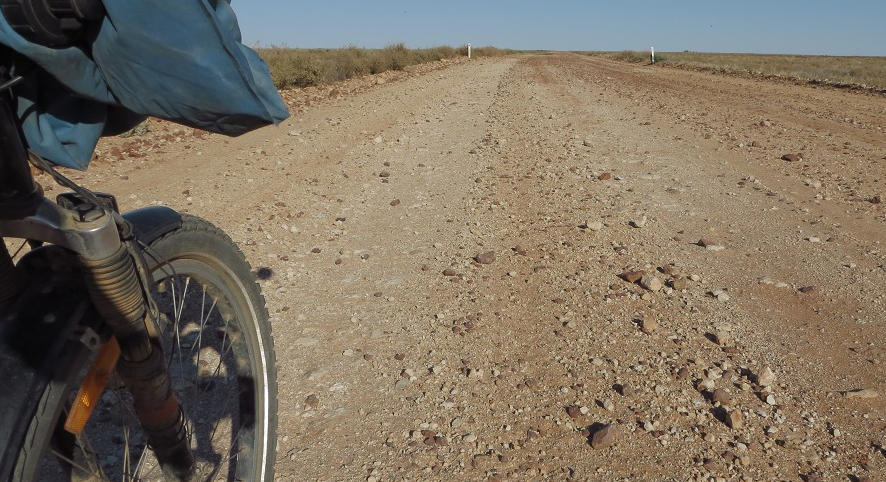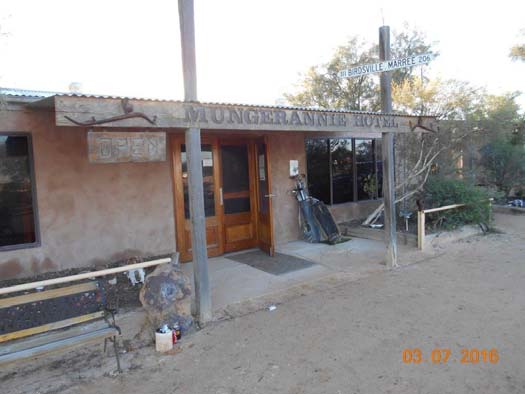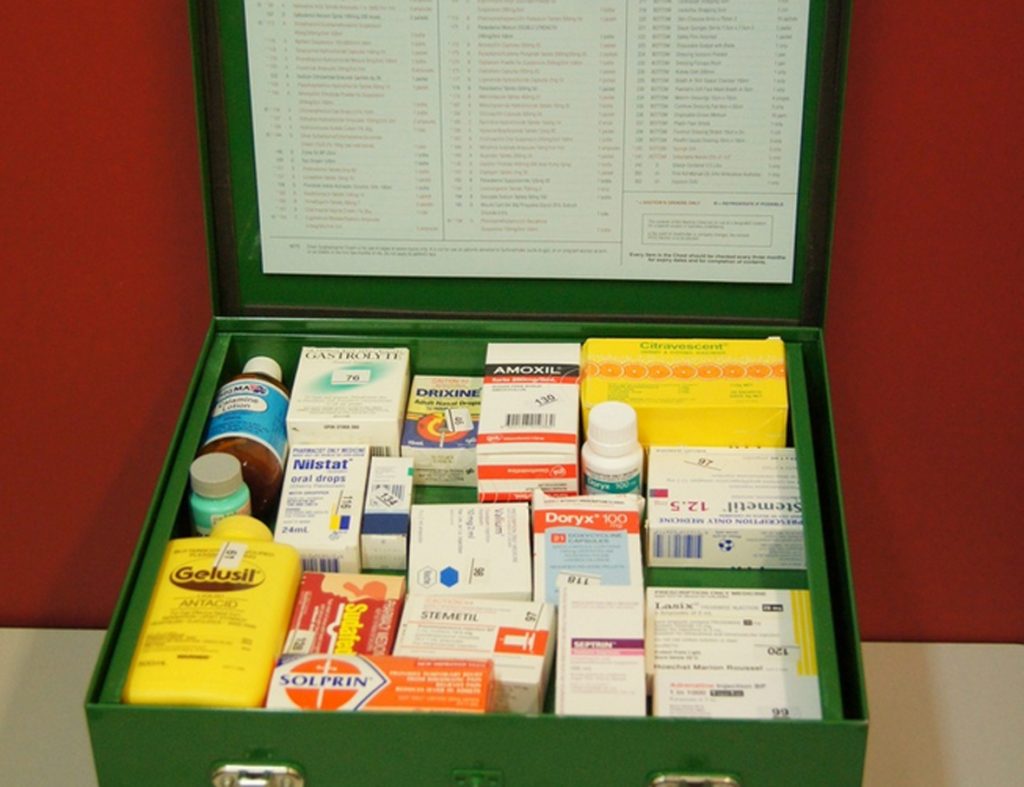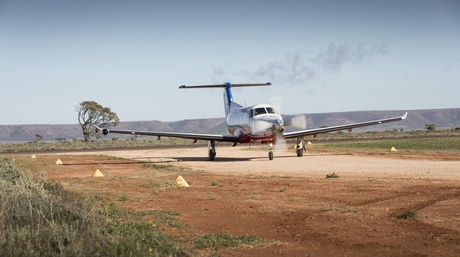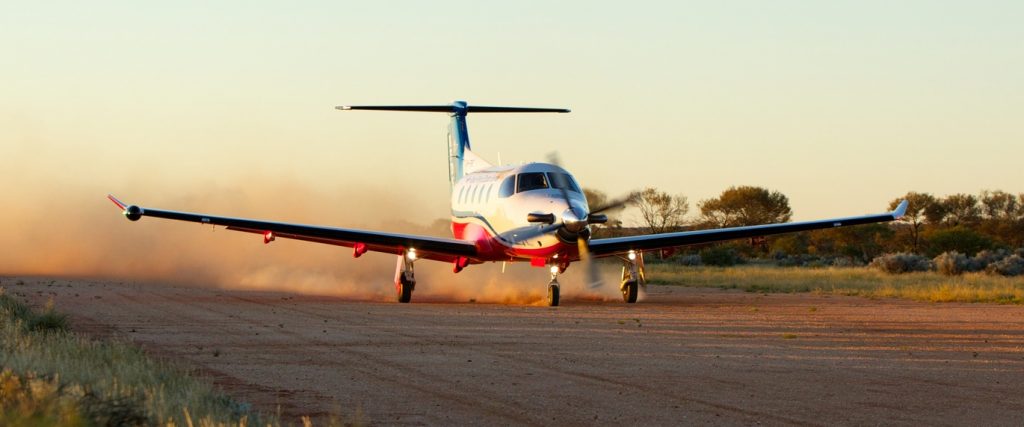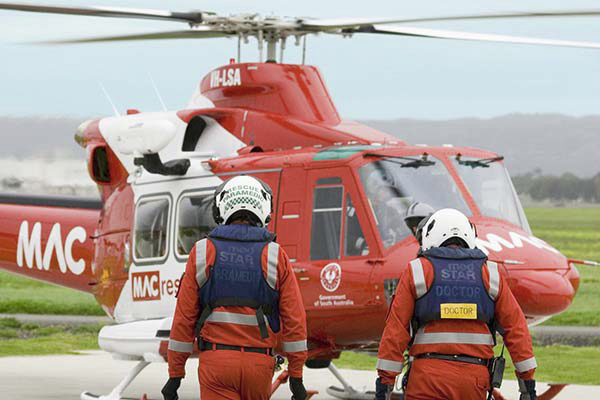Birdsville Track Motorcycle Crash – July 2016
This article discusses the events around an incident where a motorcyclist travelling the Birdsville Track came off at high speed, sustaining significant injuries that could have taken his life if it wasn’t for the efforts of people on the scene, medical professionals and the involvement of the VKS-737 Radio Network. It’s important to remember that the initial call made to the RFDS by a traveller, using a satphone, significantly understated the level of injury that the motorcyclist had suffered. After that person’s initial call, no further contact was possible as the traveller had moved on. Fortunately, a VKS-737 Subscriber arrived on scene and made selcall contact with Adelaide Base. The information provided by that subscriber resulted in the incident being significantly ramped up. Without the involvement of VKS-737 in this incident, it’s possible the victim may not have survived.
This is a detailed article that covers the incident. Also included is an article about the South Australian Ambulance Service’s MedSTAR Retrieval Team and its involvement with VKS-737.
Road Crash Rescue – Birdsville Track
by Tony and Anne Milln (Mobile 0302),
with acknowledgment to the staff of RFDS, SAAS MedSTAR, VKS-737,
the Mungerannie Hotel and all those who assisted at the incident
July 2016
Dealing with serious road crashes in the outback involves not only those who arrive at the scene, but a variety of other players including the Police, the Royal Flying Doctor Service (RFDS), SA Ambulance Service MedSTAR (in South Australia), the VKS-737 Radio Network and the Australian Maritime Safety Authority (AMSA).
RFDS generally handles low acuity transfers to and from country areas, with a flight nurse on a contractual basis with the SA Ambulance Service. Higher acuity patients are attended by SAAS MedSTAR, with teams of doctors, nurses and paramedics usually being airborne within a few minutes to respond to various medical emergencies including primary trauma from severe crashes.
The VKS-737 high frequency radio network is a national public benevolent institution which provides emergency and general radio communications assistance to travellers in rural and remote areas and provides emergency services in conjunction with RFDS and state emergency service organisations 24 hours a day, through 19 Base Stations strategically located around Australia.
AMSA is the organisation that monitors distress signal beacons. These are Electronic Position Indicating Radio Beacons (EPIRBs) registered to marine vessels, and Personal Locator Beacons (PLBs) registered to persons.
This article examines what happened at a recent motor cycle crash on the Birdsville Track and how the medical retrieval system was activated. Many of the events described occurred at the same time, so they are not necessarily described in strict chronological order.
At the beginning of July 2016, traffic was uncharacteristically heavy on the Birdsville Track as travellers made their way to the Big Red Bash, a popular music festival held around that time. Other traffic included a group of motor cyclists on enduro bikes travelling across Australia. One of those motor cyclists came off his bike about 100 kilometres north of the Mungerannie Hotel, an overnight stopping point for travellers on the Track. It is apparent that the motor cyclist was travelling at a fair speed when he and his machine parted company. He landed head first, extensively damaging his full face helmet and sustaining a number of injuries.
A passing motorist made an initial report to RFDS by satphone, but seriously understated the level of injury suffered by the motor cyclist. Shortly thereafter other travellers, including three registered nurses who stopped at the scene, realised that the motor cyclist’s injuries were much more serious than first thought, and potentially life threatening. A qualified and experienced intensive care nurse then arrived on the scene and assisted the other nurses in caring for him as best they could at the roadside.
Between them the nurses assessed the extent of the motor cyclist’s injuries which included possible broken ribs, a possible broken arm and obvious facial injuries, but no evident haemorrhaging. By this time he was showing signs of a significant head injury, with cerebral irritation, agitation and combativeness, and symptoms indicating the possibility of contra coup injury (a brain injury causing internal bleeding and pressure on the brain) and a fractured base of skull (another potentially serious injury which also can affect the brain). Fortunately, one of the vehicles on the scene was equipped with a VKS-737 HF radio, and this assessment was relayed to the duty VKS-737 radio operator (who incidentally happened to be in the Grampians and is a retired paramedic) via the Adelaide base of the VKS-737 Radio Network. Unsurprisingly the assessment by the nurses at the scene greatly ramped up the response, and the VKS-737 operator was in prompt contact with the SA Ambulance Service which, in cooperation with the RFDS, alerted a specialist anesthetist working with SAAS MedSTAR.
About an hour into the incident a volunteer ambulance officer arrived at the scene, having heard about the crash while at Mungerannie. She produced a cervical collar and a blood pressure monitor – the latter greatly improving the quality of information relayed via VKS-737 back to SAAS MedSTAR about the condition of the motor cyclist. The nurses and the ambulance officer had some difficulty both with fitting the cervical collar and taking the motor cyclist’s blood pressure because he was wearing very good protective bike leathers which had to be cut away along with several layers of clothing. Taking his blood pressure also proved to be quite difficult because of his combative and agitated state.
While all this was going on, an experienced Country Fire Service volunteer, assisted by the brother of the ambulance officer, arranged traffic control to deal with the 100-odd vehicles on the move north to Birdsville. They parked vehicles and caravans so as to create a single lane of traffic, then kept in contact at either end of the chicane so formed by CB radio and good old fashioned hand signals.
At some point, a request was made for an EPIRB (a term often incorrectly used when referring to a PLB) to be activated to pinpoint the exact location of the incident. This was presumably to confirm that the nearest airstrip capable of handling an air ambulance was Mungerannie, as the nearer airstrip at Clifton Hills was affected by the wet weather being experienced at the time. One of the vehicles was carrying a PLB, which was duly activated.
AMSA procedures say that “… a distress beacon can be activated on behalf of another person/group of persons that are in grave and imminent danger … If in the event you call 000 or RFDS and the location of distress is not known the operator may request you to activate a distress beacon to assist them in locating you” [author’s emphasis]. When a PLB is activated, AMSA rings the owner and, if there is no response, contacts the police for them to take appropriate action. In this case the PLB was useful in confirming the decision to use the Mungerannie airstrip.
The VKS-737 operator and the SAAS MedSTAR doctor had by this stage also been in contact with the Mungerannie Hotel, and staff were able to locate two doctors who took a spinal board and other medical supplies to the scene, arriving some two hours after the crash. The VKS-737 operator had also made contact with the Police, informing them of the accident.
The motor cyclist was judged to be too badly injured to be moved without a spinal board and those at the scene at one stage even considered joining two MaxTrax together as a back board, using straps and shovel handles. Fortunately, the spinal board from Mungerannie made this unnecessary and the motor cyclist was placed on it, loaded by seven people into a caravan and taken back to Mungerannie accompanied by the volunteer ambulance officer.
Treatment and transfer was handled by SAAS MedSTAR in an RFDS PC-12 aircraft. The SAAS MedSTAR medical team stabilised the motor cyclist over a three hour period, then flew him to Adelaide where he spent some time in intensive care at the Royal Adelaide Hospital. After more time in a general ward, he returned to his home State.
The motor cyclist’s survival was helped by the fact that professional health personnel were quickly in attendance, and that passers-by variously had an HF radio, a cervical collar, a blood pressure monitor, a backboard and a PLB. Contact with VKS-737 enabled a flow of vital information between the incident and SAAS MedSTAR, RFDS and Police.
After the event, privacy concerns prevented the police and the hospital giving anything out about the motor cyclist’s condition. However one of his friends had been in touch with one of the nurses who was told that he had been in intensive care and then stepped down to a general ward before being able to return home. The volunteer ambulance officer also reported that she had spoken to the motor cyclist who was by then recovering well at home.
Apart from the ultimate success of the rescue operation, the incident provided a significant insight into what actually happens behind the scene at a serious outback road crash – or, come to that – any other serious medical mishap.
First and foremost, everything takes a long time when dealing with an outback road crash. This clearly has an effect on the chances of survival in the case of serious injury. At this incident, the motor cyclist was looked after at the roadside for about two and a half hours, in transit back to Mungerannie for another hour, treated and stabilised by SAAS MedSTAR before takeoff for three hours, and in transit to hospital for probably another two hours. So at the time he crashed he was at least eight hours away from intensive care in hospital. That is a very long and possibly life threatening time when the first hour (what health professionals often refer to as “the golden hour”) is critical for survival.
It is frustrating to be at the roadside with none of the equipment and support which would be quickly on hand in the metropolitan area. It can also be very upsetting and is likely to cause feelings of helplessness, but anything sensible that can be done in terms of first aid is better than nothing. The main thing apart from whatever can be done at the scene to keep the casualty still and as comfortable as possible, is to activate the available resources as quickly as possible, and this means knowing who to contact and what the various roles are.
Everyone passing wants to help, but too many people can become a liability and having someone control the traffic is essential. There needs to be a runner to take messages to the radio operator, gather equipment and so on. In this particular situation the nurses, the ambulance officer and the traffic controllers worked easily as a professional unit, but generally there needs to be someone who takes charge and coordinates the scene and the personnel. This includes caring for treating personnel as well as the casualty – try kneeling on the Birdsville Track for two hours sometime – and as far as possible reassuring the casualty’s travelling companions.
It is important to convey the casualty’s condition accurately to the emergency services. In this instance RFDS was first told by satphone that the motor cyclist was “OK” (which he may indeed have seemed before his extensive injuries took hold), so no great priority was initially placed on the incident. The fact that the person initially reporting to RFDS then left the scene without remaining until other help arrived needs no further comment.
The arrival of the ambulance officer with a cervical collar, a blood pressure monitor and a pair of surgical shears greatly assisted both the stabilisation of the motor cyclist’s neck and the quality of clinical information being passed back via VKS-737 to SAAS MedSTAR, and the spinal board from Mungerannie enabled the motor cyclist to be moved. Most outback first aid kits are equipped for broken limbs, burns and dressings. The addition of a soft cervical collar, a blood pressure monitor, a stethoscope, Guedel airways and a pair of surgical shears would enable neck stabilisation, cardiovascular monitoring and airway management. Even if a traveller responding to an incident doesn’t have the necessary first aid or nursing skills to use such gear, another passer-by may have the necessary knowledge. In any event, it may be possible to use such equipment under instruction.
Many travellers carry a satphone for emergencies, but this incident demonstrated the benefit both of the VKS-737 Radio Network and of carrying a Personal Locator Beacon (PLB) to provide or confirm an exact location even if that information is also available via in-car GPS.
In conclusion, the incident showed the participants what goes on back there in civilisation. There is an extensive network of specialist medical resources – most notably RFDS and SAAS MedSTAR (in South Australia, but the other States have similar medical retrieval arrangements) and the activation and co-ordination of these resources is largely dependent throughout Australia on the VKS-737 Radio Network. They are well worth a visit at the next caravan and camping show.
It just remains to say that this incident was a sobering reminder of the problems of coping with serious injury in the outback and the time involved in getting medical assistance. The motor cyclist was lucky that a lot of nursing expertise was quickly on hand, that someone had a VKS-737 radio and someone else had a PLB. Others have not been so lucky.
South Australian Ambulance Service MedSTAR
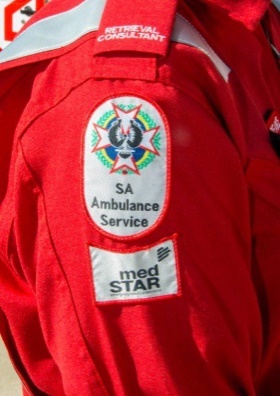
About a fifth of MedStar’s work involves responding to metropolitan emergencies, such as motor vehicle crashes. However the majority of MedStar’s work is critical-care transportation, to allow already hospitalised patients who require a higher-level of care access to Intensive Care beds at better equipped and staffed hospitals. Examples of this might include a patient at a metropolitan hospital where there are insufficient or no Intensive Care Unit beds available or a patient from a rural hospital needing a higher-level of care than they are able to provide. MedStar can also be contacted by doctors for advice on patient care, both for adults and children.
MedStar responds to various emergencies such as medical emergencies as well as primary trauma from severe crashes. Teams made up of highly trained doctors, nurses and paramedics are usually airborne within a few minutes, utilising helicopters or fixed wing aircraft.
An example of MedStar’s work occurred in early July when a motorcyclist came off his bike at around 90 kilometres an hour on the Birdsville Track, north of Mungerannie. He and another motorcyclist were heading to Birdsville for the Big Red Bash. An initial call was made to the Royal Flying Doctor Service by a passer-by, using a Satphone. That call seriously understated the level of injury that the motorcyclist had suffered.
Chris and his wife Christine (Mobile 1665) also arrived at the scene. Christine is a well-qualified nurse and soon realised that this fellow’s injuries were potentially life threatening. Chris selcalled Base Coordinator Robert via Adelaide Base and relayed Christine’s observations of what she was seeing from the injured motorcyclist, who by this time was showing signs of a significant head injury. The state of his damaged helmet also supported this, combined with the increasing level of cerebral irritation that the motorcyclist was exhibiting.
With this information passed to Robert supporting the motorcyclist’s true condition, contact was immediately made with the South Australian Ambulance Service who, in cooperation with the RFDS alerted Dr. Kylie Stanton, a Specialist Anaesthetist working with MedStar. With the VKS-737 Radio Network maintaining radio comms to Chris (Mobile 1665), information was passed back and forth, enabling the transfer of the victim, now essentially unconscious to the air strip at Mungerannie where a MedStar emergency medical retrieval team, flown from Adelaide met them and stabilised the motorcyclist before flying him back to Adelaide where he was admitted to the intensive care unit of Royal Adelaide Hospital.
It was indeed fortunate that three highly qualified nurses, a paramedic and two doctors were travelling the Birdsville Track that day, that prompt contact was made with the VKS-737 Radio Network by our Subscriber Chris (Mobile 1665) who passed on valuable information about the motorcyclist’s condition and that prompt dispatch of SA Ambulance’s MedStar Emergency Medical Retrieval Service happened. Without this well-orchestrated response, the motorcyclist may not have survived.
Last heard, the motorcyclist was recovering back at home in Queensland.
Categories
- 3G mobile phone (1)
- Codan Envoy (6)
- Codan Raffle (5)
- Community Service (18)
- Coronavirus (2)
- COVID-19 (3)
- Environmental (2)
- Fund Raising (2)
- HF-Tel (1)
- High Frequency (34)
- Minelab (5)
- Needing Help (9)
- News (29)
- permits (1)
- Radio (35)
- Restrictions (3)
- RFDS (7)
- Road Closures (3)
- satellite (2)
- satphones (4)
- Selcall (2)
- Sports (1)
- Travel (10)
- VKS-737 Radio Network (37)
- VKS-737 Subscribers (27)
- what3words (1)


